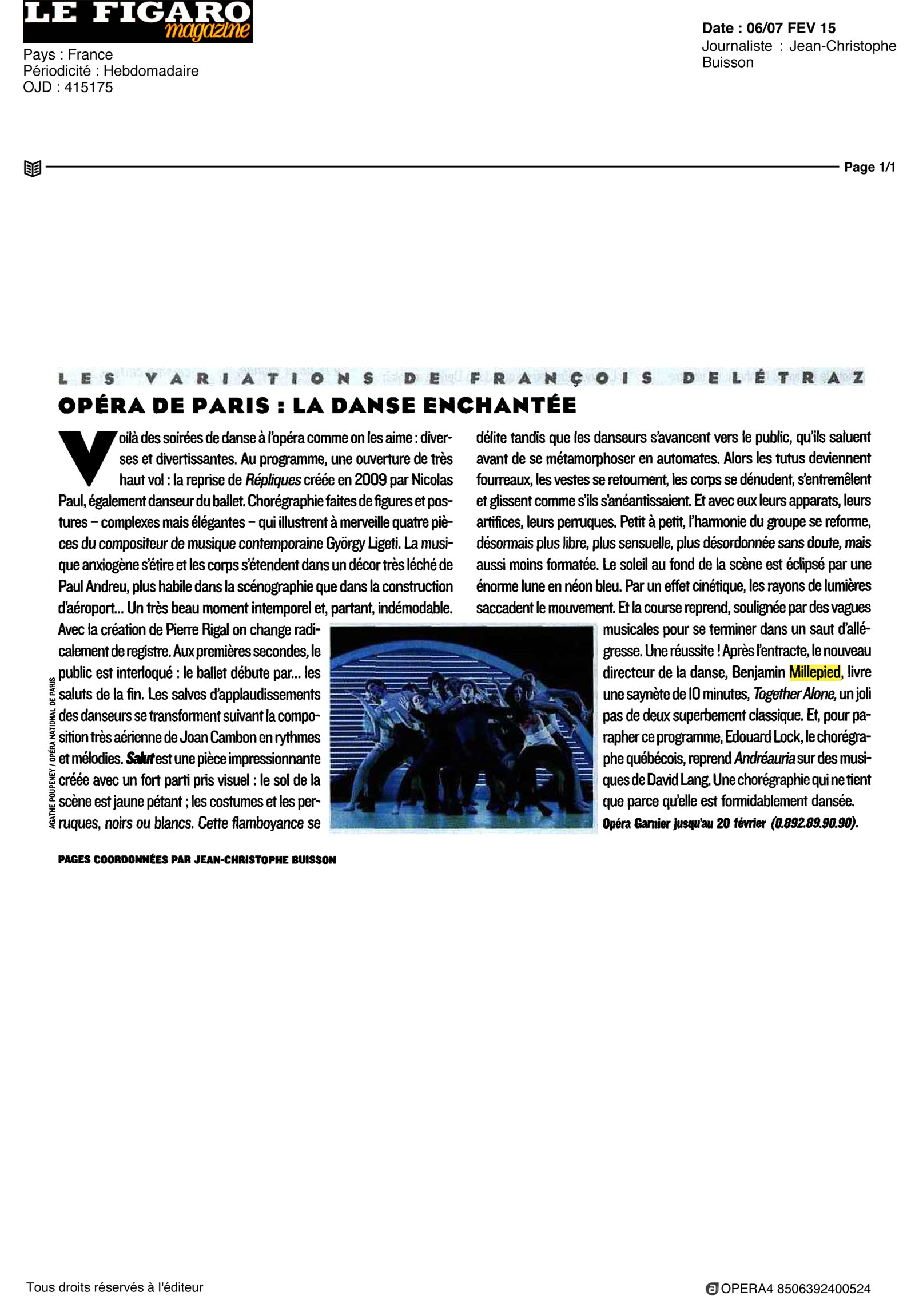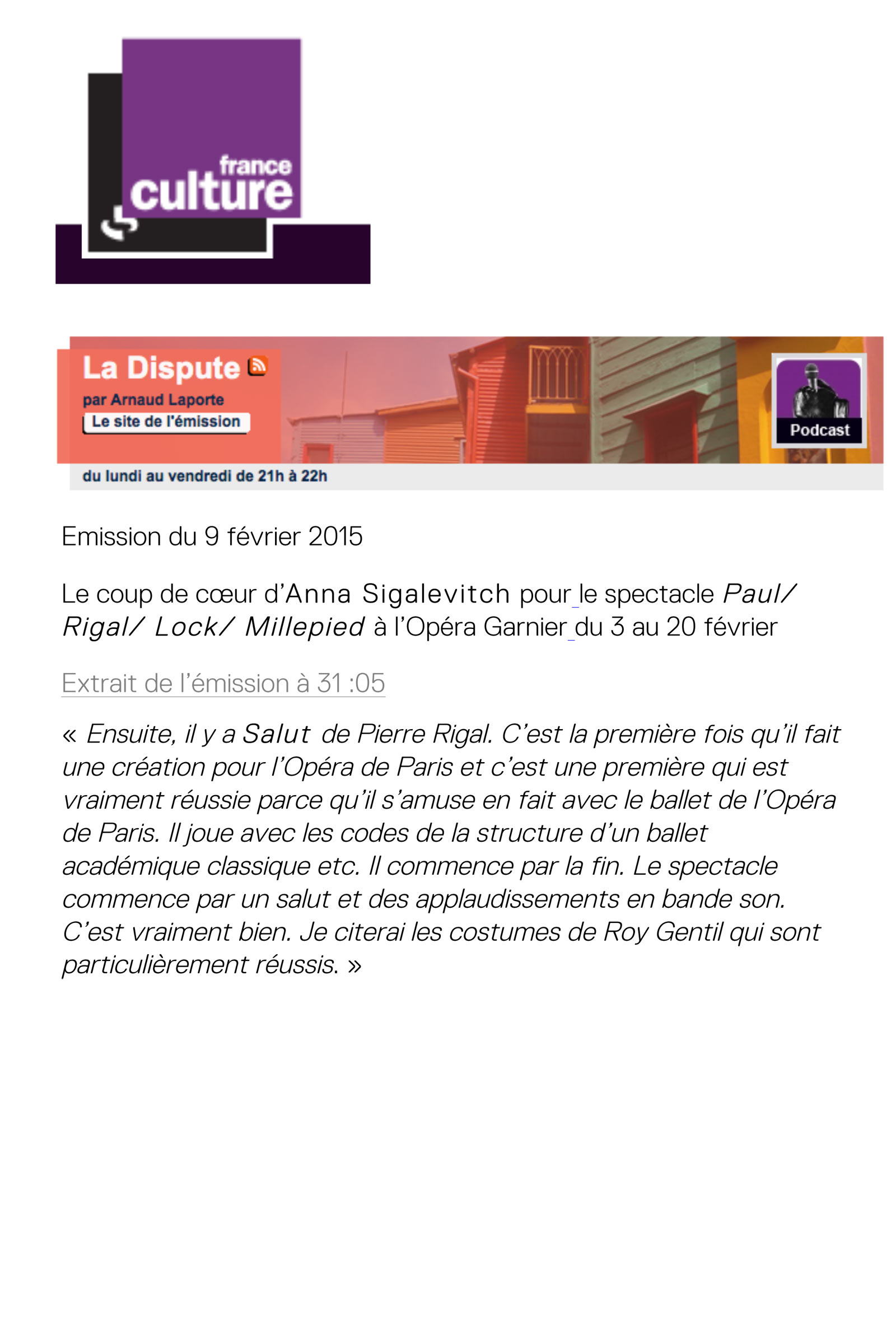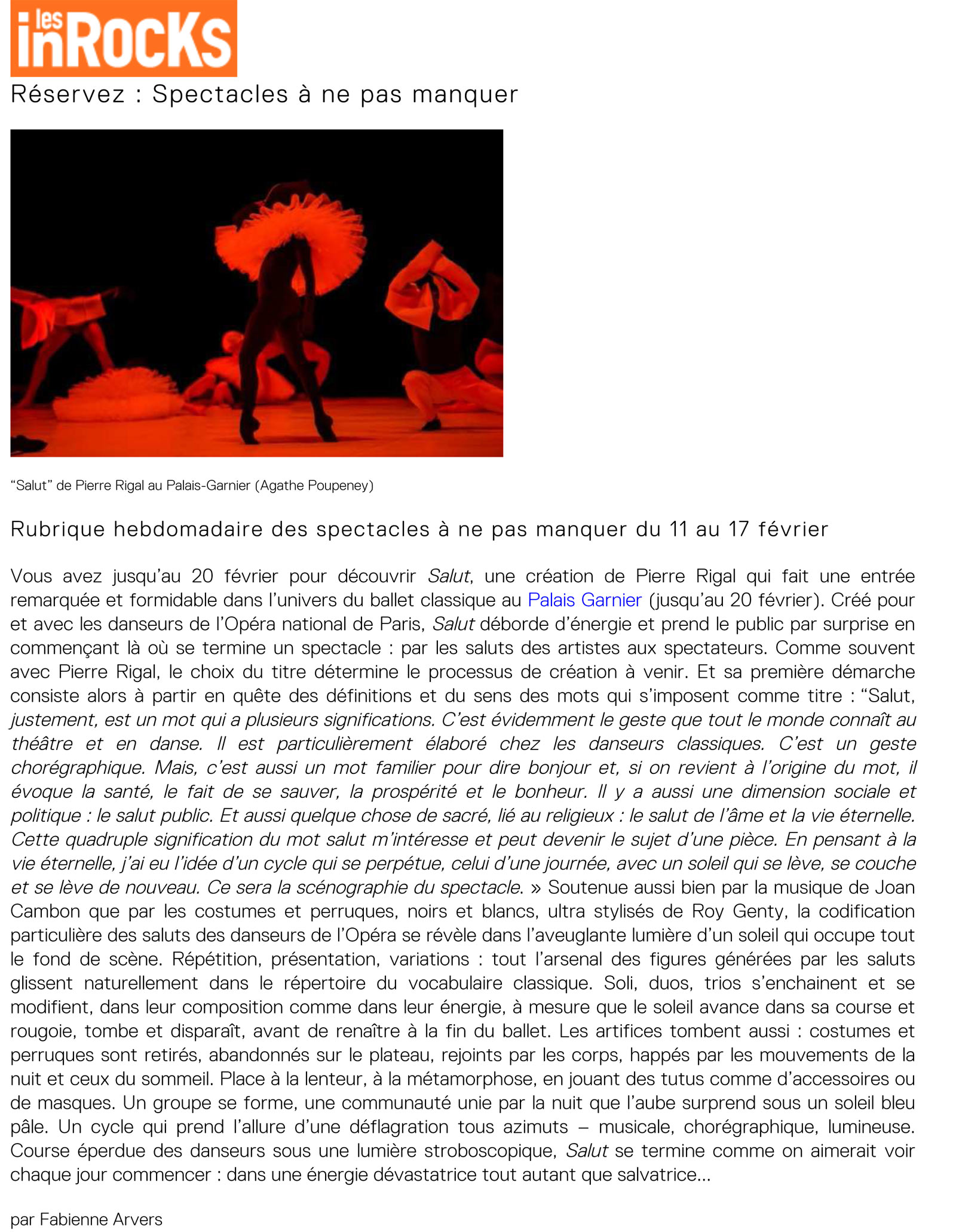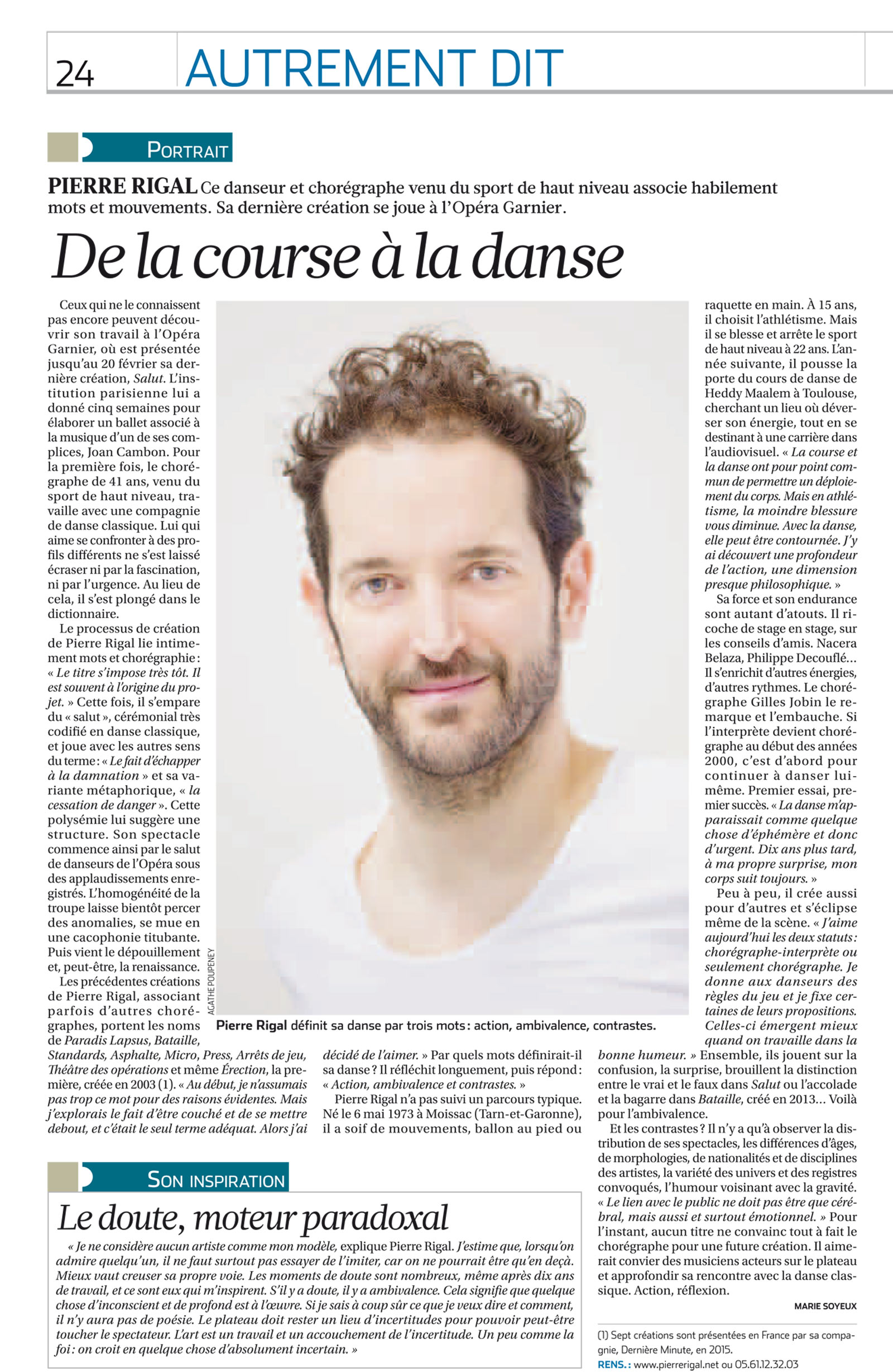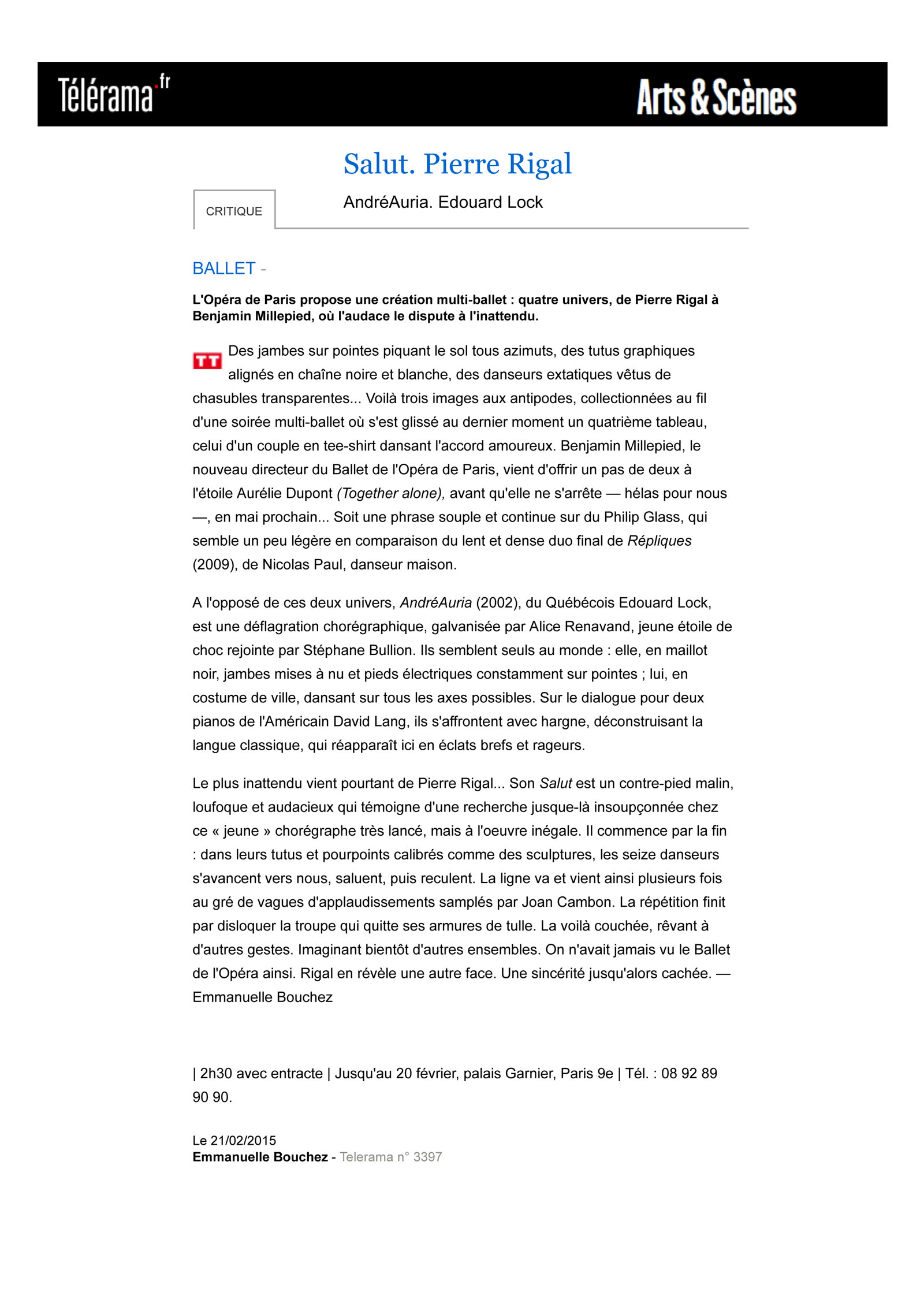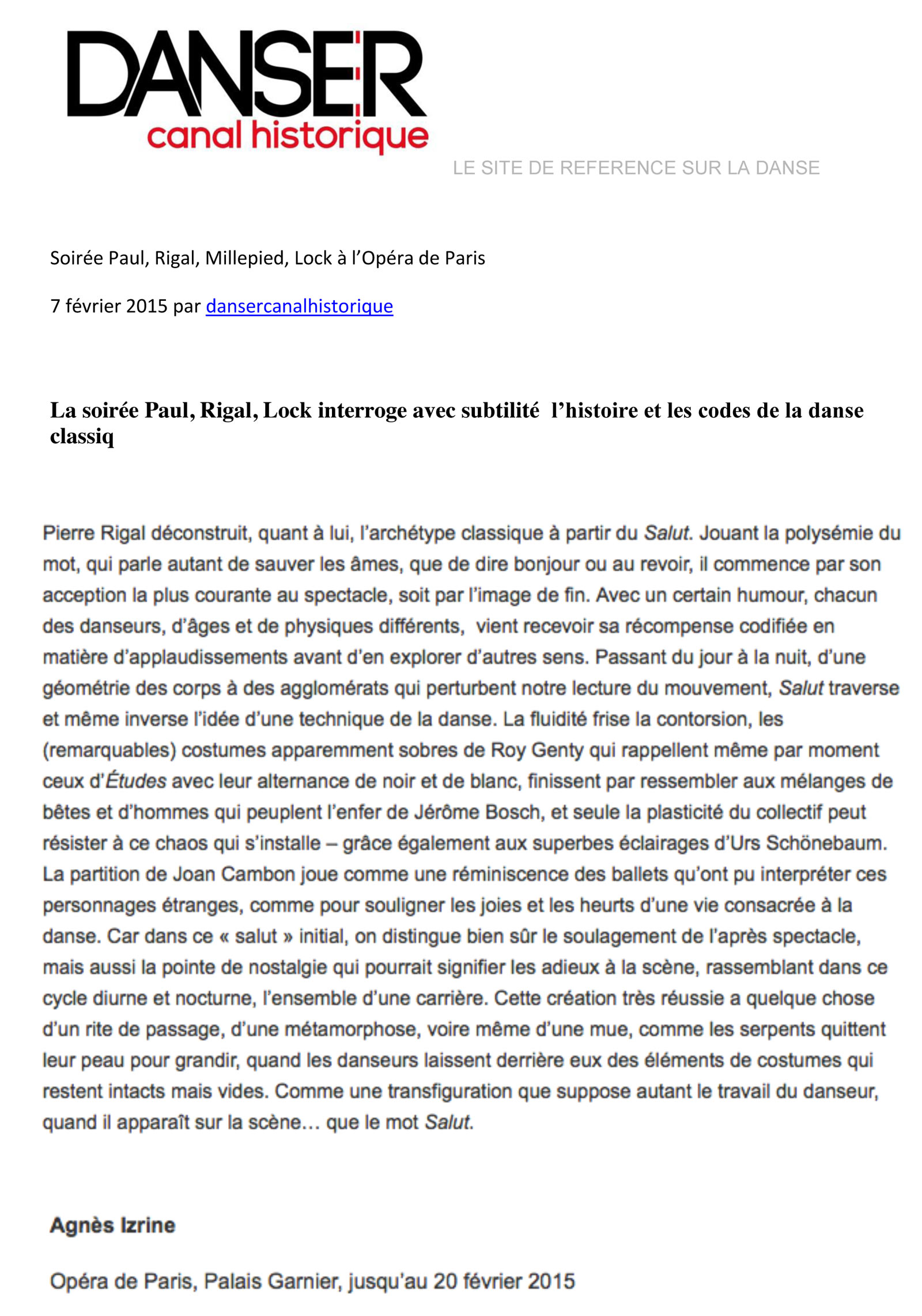Rigal
COMPAGNIE
DERNIERE
MINUTE

contact@pierrerigal.net
+33(0)5 61 12 32 03
Suzanne Maugein
administration / production
Nathalie Vautrin
booking / production / communication / educational activities

COMPAGNIE
DERNIERE
MINUTE

contact@pierrerigal.net
+33(0)5 61 12 32 03
Suzanne Maugein
administration / production
Nathalie Vautrin
booking / production / communication / educational activities


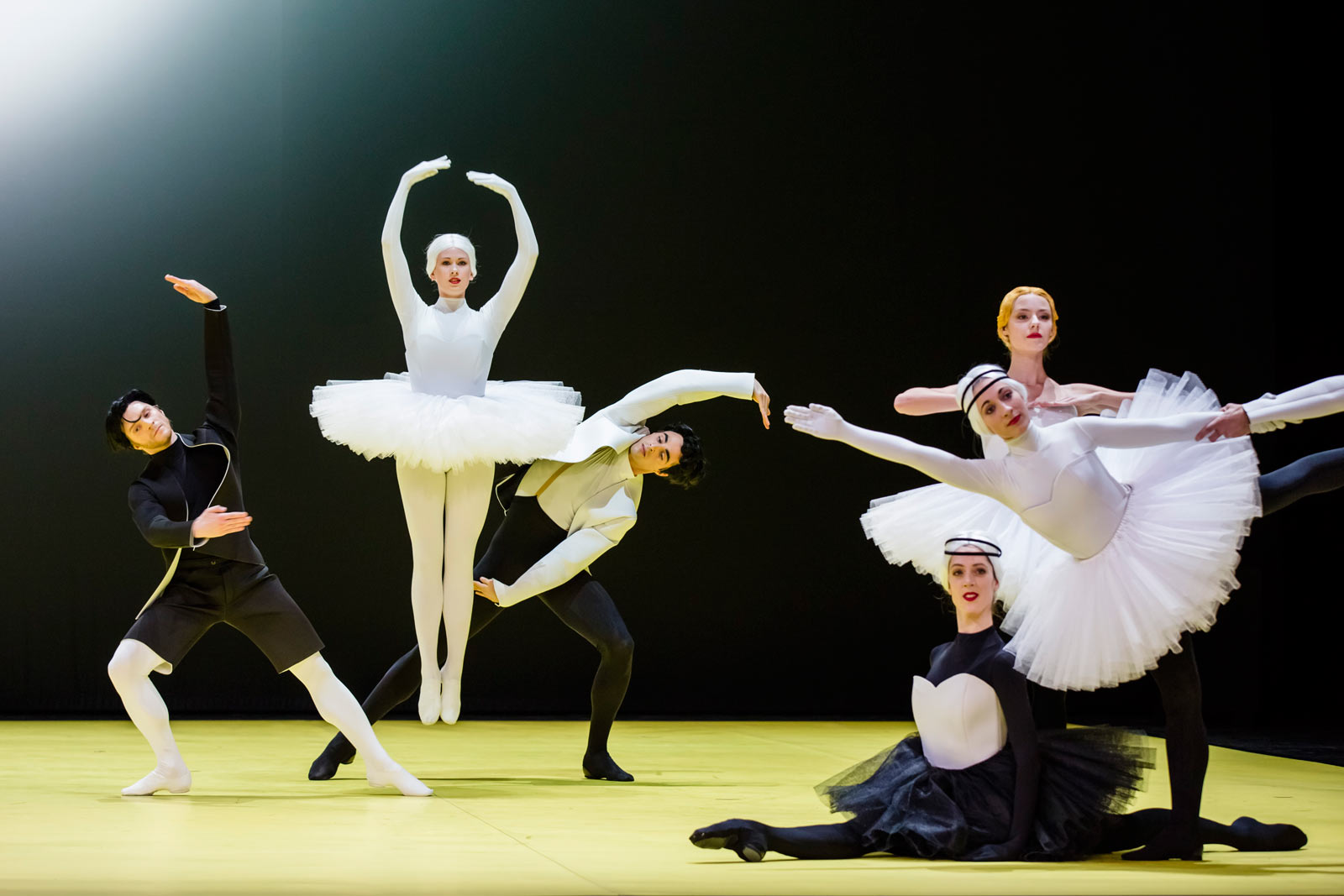
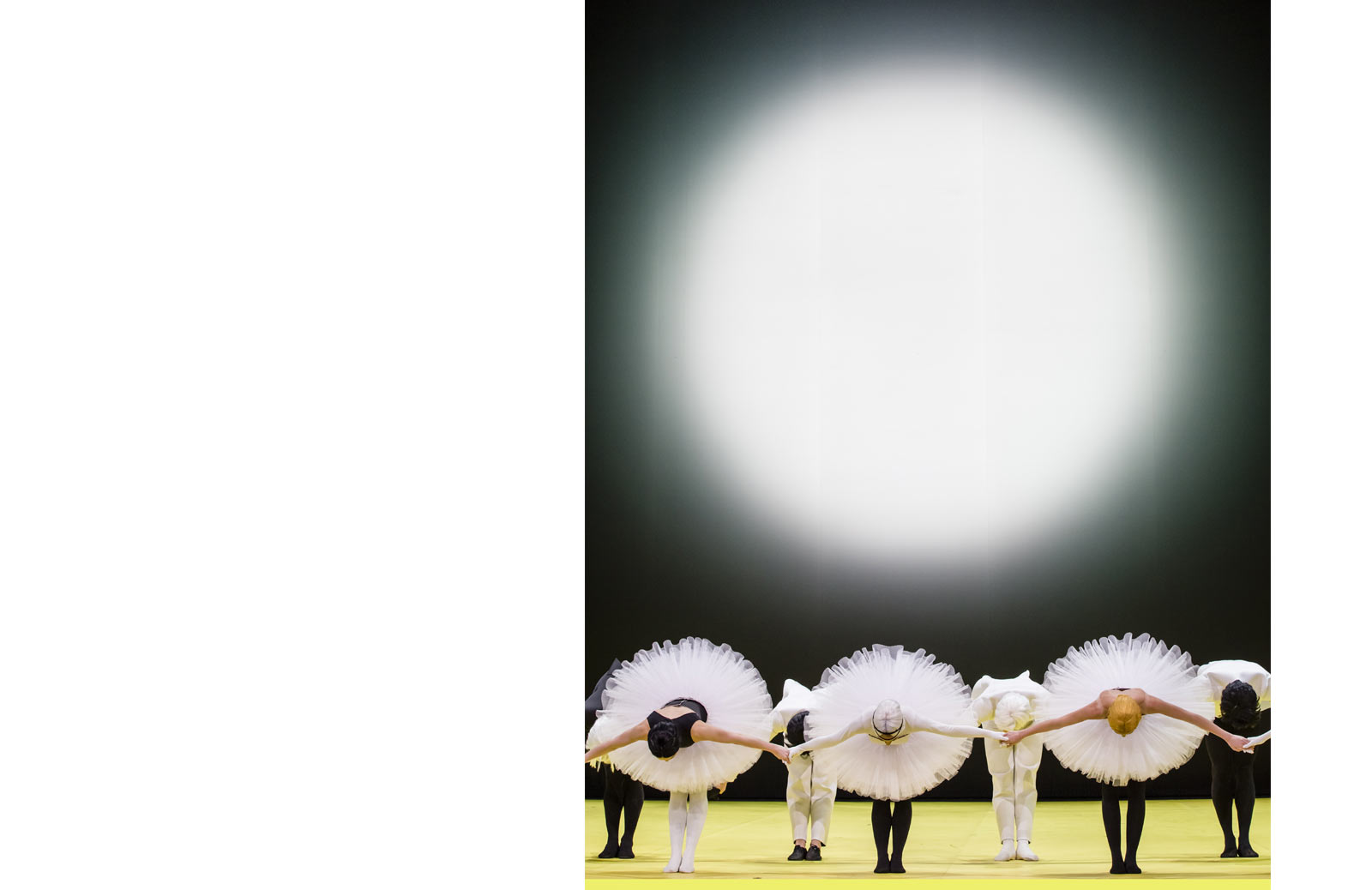
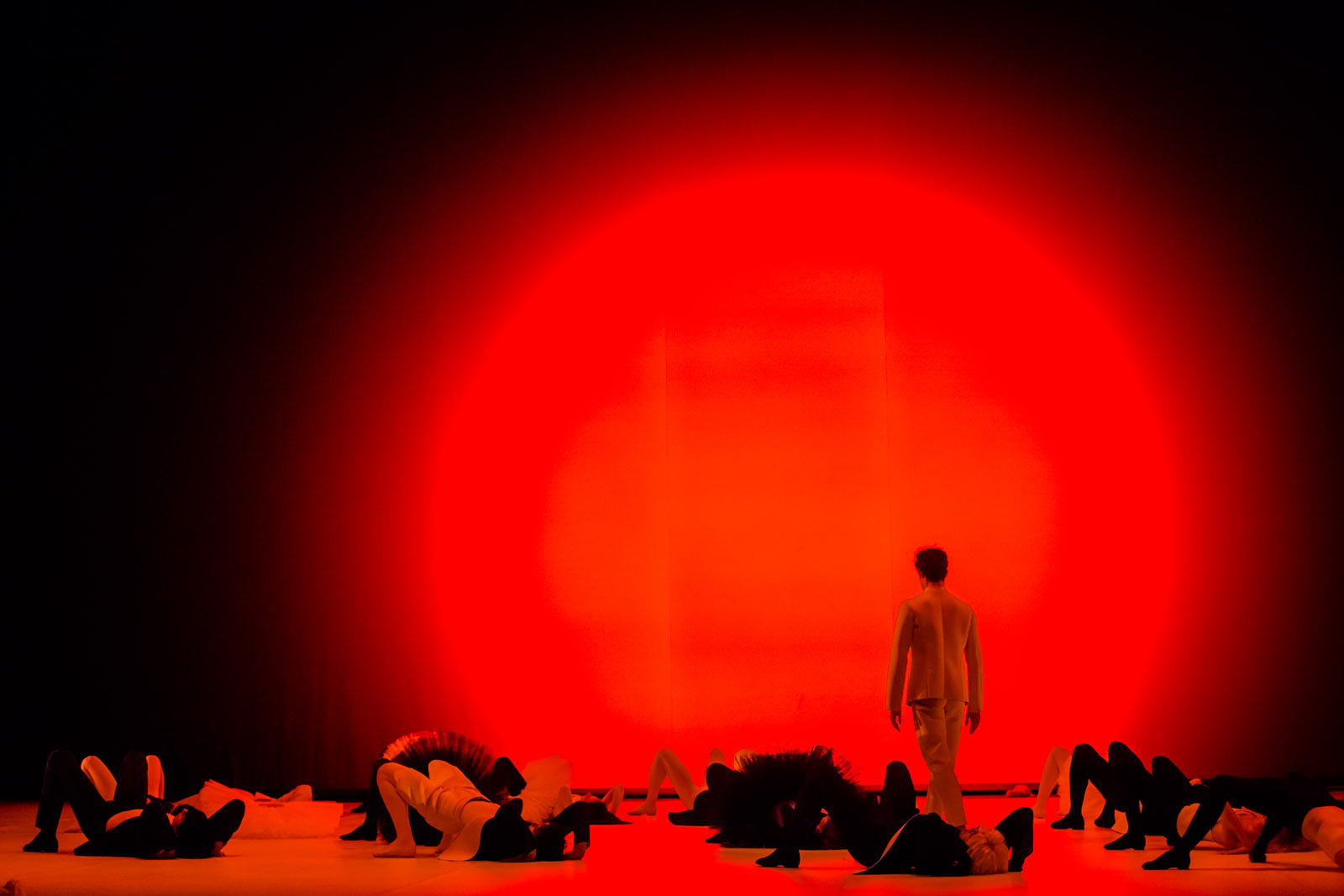
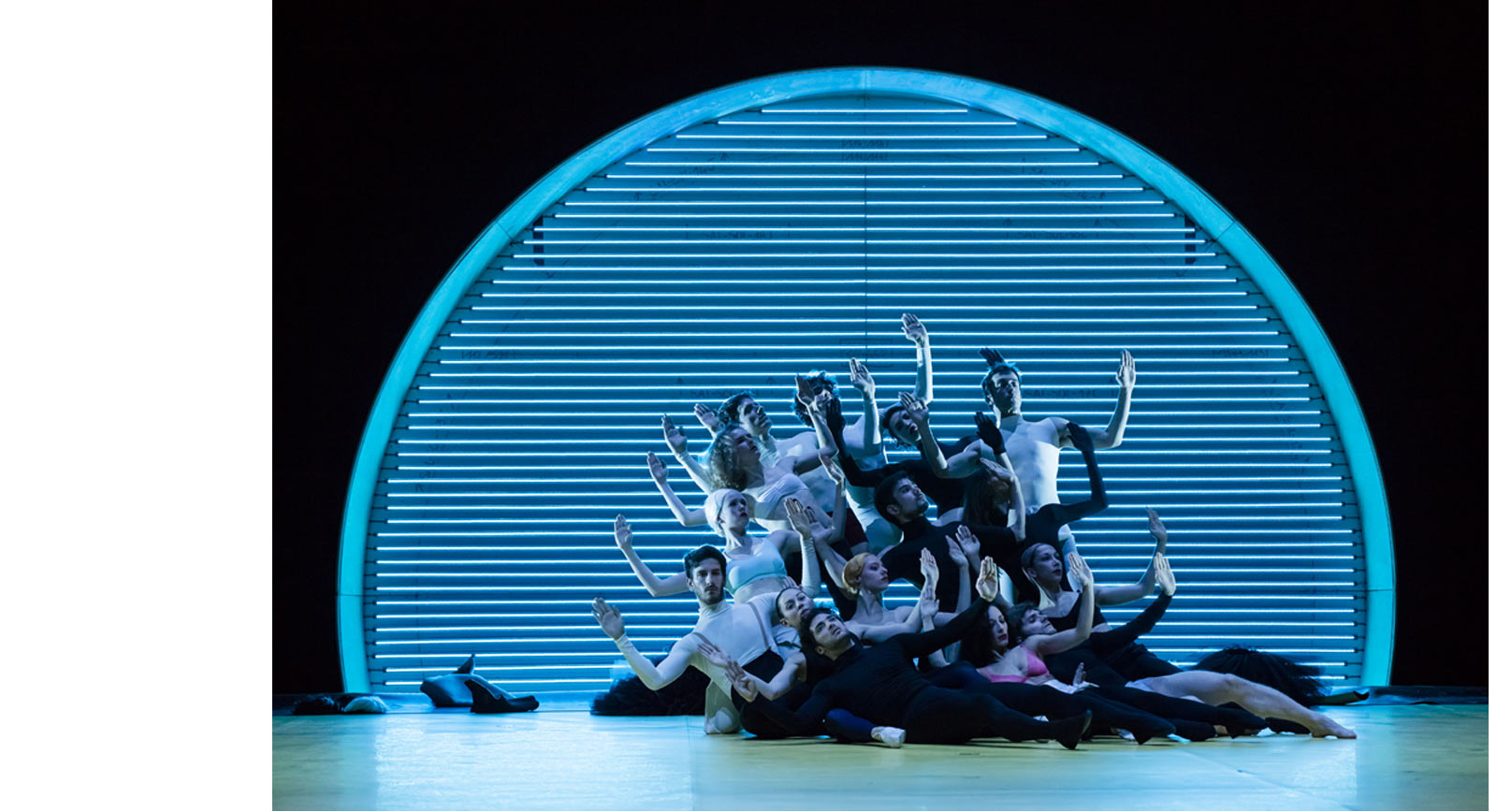
A ballet by Pierre Rigal for le Ballet de l’Opéra de Paris.
For the ballerina or ballet dancer the “salute” performed during or at the end of a ballet is a codified sequence which enables to partially or progressively come out of the fiction of the show. Its ceremonious choreography is nearly unalterable and positions itself as a transition from the in- to the out-side, between imagination and reality, an effort and a confort. Emotions, tributes, gestures of respect, gratitude have space to be exchanged between the public and the dancers.
The ballet Salute focuses on this gesture to bring forward the feelings entangled in this ritual. And these feelings are of various shapes, miniature versions of the different definitions of the word “salute”. Thus, the dramaturgy of the play tends to balance the notions of danger, escape, anguish with those of calm, enjoyment or happiness. For the dancer, a show is always an exposure that the salute ends somewhat like a liberation. In this play, the exposure expresses itself literally in a metaphor during which the archetype of the classical salute is broken up progressively before dying as if the end of a cycle. But at this point, the salute is maybe a deliverance, a resurrection, life after death, life without end… We can ask ourselves if, after having faded like the sunlight, the dance of the salute will rise again, will grow again and step once more into the spiral of perpetual dance…
Pierre Rigal.
Preparatory text
For the dancer, the “salute” at the end of a ballet is a particular sequence during which emotions, tributes, and respect circulate between him or her and the audience in a nearly unchangeable choreographic ceremony. Though familiar this ancestral ritual is still a singular moment filled with emotions. As a starting point the ballet Salute focuses on the importance of this sequence and on the polysemy of the word in order to develop a choreographic dramaturgy. The study of the “salute” sequence leads the narration and physical research towards the notions of danger, escape and anguish on the one hand, and on the other hand towards notions of appeasement, enjoyment and happiness. Moreover, the ideas of finiteness and eternity, close to the notion of salute, brings the imagination to cycles or sine curves of collective or individual movement. Finally, a narration shaped by convolutions of “one way” then “reverse way” movements reminds us of the cycle of eternal existence. Following this cycle, the lighting and scenography evoke the idea of a visual apocalypse, a revolution (in the physical sense of the therm), a visual renaissance…
Pierre Rigal
Salute : definition ( source : Wiktionary )
Noun. from the Latin salutare (“to greet ; to wish health to”), from salutis, genitive of salus (“greeting, good health”), related to salvus (“safe”).
1. A formal gesture made in honour of someone or something, usually with the hand or hands in one of various particular positions.
Ex : The soldiers greeted the dignitaries with a crisp salute.
2. Any action performed for the purpose of honor or tribute.
Ex : The orchestra performed the concert as a salute to Gershwin.
3. (Religion). Means of escape from damnation, to obtain eternal felicity.
Ex : The salute of souls ; grants eternal life after death.
4. Action of saluting.
A piece for 16 dancers
35 minutes
conception Pierre Rigal
music Joan Cambon
costumes Roy Genty & Adélaïde Le Gras
artistic collaborator Mélanie Chartreux
Created on the 3rd February 2015 at the Opera de Paris – Palais Garnier.
Produced by Opéra de Paris

